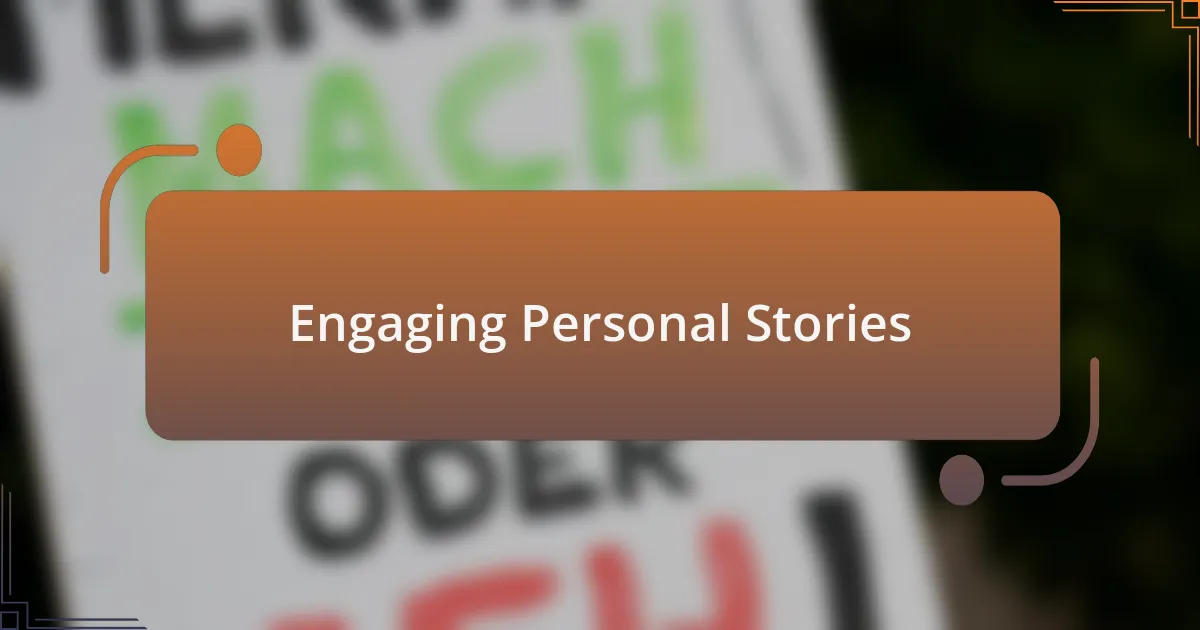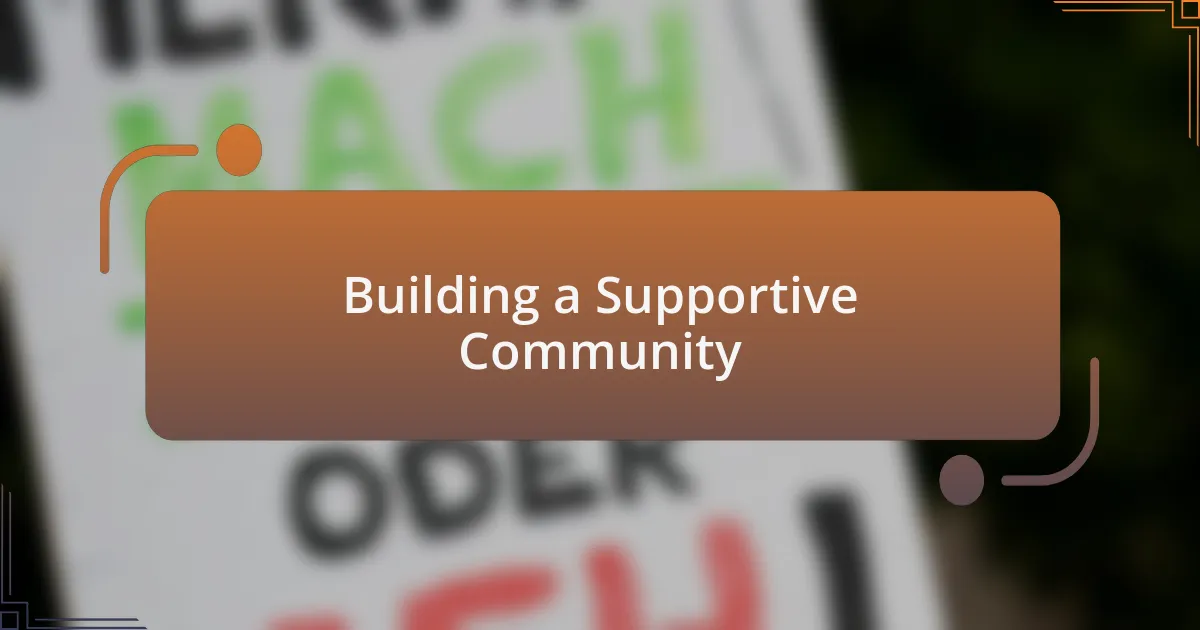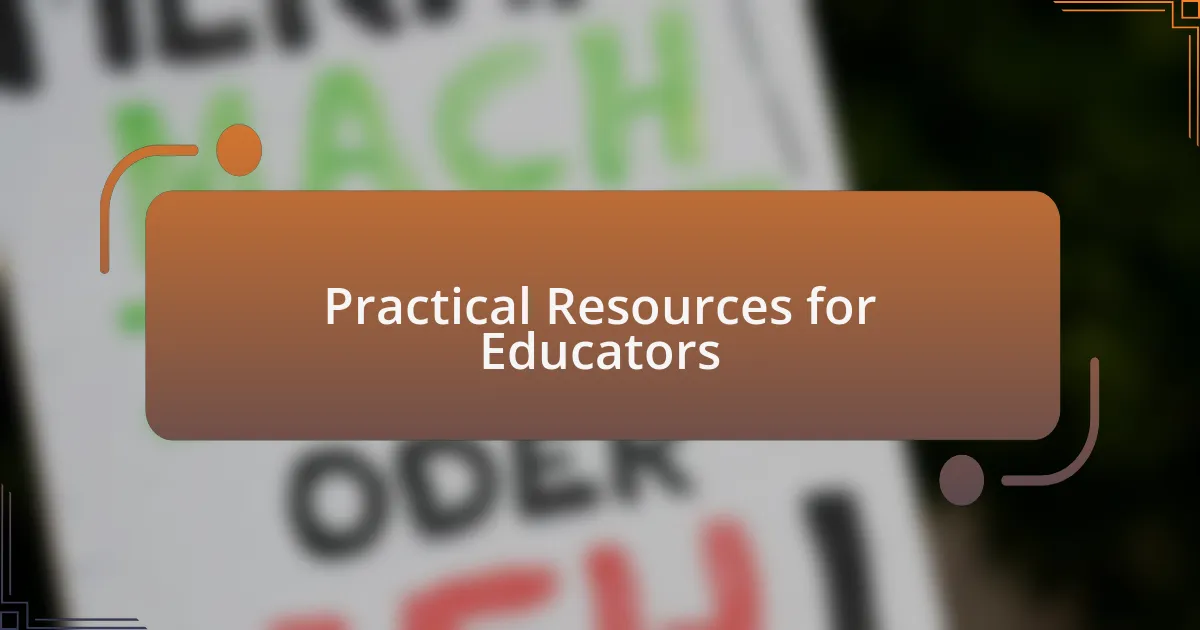Key takeaways:
- Pro-life advocacy emphasizes the inherent value of all human life and the importance of sharing personal stories to foster understanding and compassion.
- Education is crucial in advocating for pro-life issues, as it empowers individuals to articulate their beliefs and connect with others through shared experiences.
- Effective communication, including storytelling and adapting language to the audience, enhances engagement and fosters meaningful discussions on pro-life topics.
- Building a supportive community through mentorship and collective action strengthens the pro-life movement and encourages individuals to actively participate and share their experiences.

Understanding Pro-life Advocacy
Pro-life advocacy centers on the belief that all human life is inherently valuable, from conception to natural death. I still remember attending my first local rally; the energy in the crowd and the passion in their voices made me realize how deeply held these convictions are. It’s not just about opposing abortion; it’s about promoting a culture that cherishes life in all forms, and that’s a powerful message to share with others.
When I engage in conversations about pro-life issues, I often wonder, how can I convey the emotional weight behind this stance? It’s crucial for advocates to express not only facts but also heartfelt stories. Sharing the experiences of individuals affected by abortion—whether through loss, regret, or the joy of parenting—can open doors to understanding and compassion.
The complexity of pro-life advocacy also lies in navigating the moral dilemmas that arise. I often reflect on my own journey in grappling with these questions. For instance, considering the circumstances that lead individuals to contemplate abortion—such as financial hardships or lack of support—invites a deeper empathy that’s essential for meaningful dialogue. How do we inspire the world to see life as a gift, especially in moments of pain and uncertainty?

Importance of Education in Advocacy
Education serves as a powerful tool in advocating for the pro-life movement, as it equips individuals with the knowledge and confidence to articulate their beliefs. I recall a time when I helped facilitate a workshop aimed at empowering young people with facts about fetal development and the impact of abortion. Seeing their eyes widen with realization was a stark reminder of how important it is to shed light on these topics.
Moreover, learning about the stories of those who have faced the ramifications of abortion can deepen our understanding and empathy. I once spoke with a woman who had made the choice to have an abortion; her reflection on the emotional pain and regret she experienced after was both profound and eye-opening. In sharing such narratives, we provide context that statistics alone cannot convey, fostering connection and compassion in our advocacy.
When I consider the broader implications of education in advocacy, I often ask myself, “Are we doing enough to promote love and support for both the mother and child?” The answer lies in making educational resources accessible and relatable, turning the complex dialogue around pro-life issues into opportunities for constructive conversations. This blend of knowledge and empathy cultivates a more informed and compassionate pro-life community, better prepared to face the challenges ahead.

Effective Communication Techniques
Effective communication is about more than just sharing facts; it’s about establishing a rapport with your audience. I remember preparing for a presentation on pro-life advocacy where I focused on actively listening to the concerns and questions from the audience. By addressing their points and showing that I valued their input, I created an atmosphere of trust and openness. Isn’t it fascinating how a simple shift in focus can transform a conversation?
Another technique that has proven invaluable to me is storytelling. When I share personal experiences related to the impact of abortion, I notice people’s defenses drop. One time, I recounted a heartfelt conversation with a friend who struggled with her decision, allowing the audience to connect with her emotions rather than just her situation. Why do stories resonate so deeply? Perhaps it’s because they evoke empathy and allow listeners to see the human side of complex issues.
Lastly, I often remind myself to adapt my language to my audience. For instance, when talking to students, I steer clear of jargon, opting for simple phrases that convey my message clearly and effectively. I once explained a complicated fetal development process using everyday analogies, and I could see the light bulbs go off. Isn’t it empowering when everyone leaves a conversation feeling informed and engaged? By adjusting our communication techniques, we can foster deeper understanding and encourage meaningful discussions around pro-life advocacy.

Engaging Personal Stories
Engaging personal stories have the power to turn abstract concepts into relatable experiences. I recall a time when I attended a retreat focused on pro-life issues, where a participant shared her journey of choosing adoption as a solution to an unexpected pregnancy. Listening to her speak about the joy of seeing her child thrive in a loving home opened my eyes to the beauty of that choice. How often do we overlook the countless positive outcomes that arise from difficult decisions?
Another memorable experience occurred during a community forum where a young man bravely discussed how an unplanned pregnancy affected his relationship with his girlfriend. Instead of pointing fingers, he spoke about love, responsibility, and growth. It struck me how his vulnerability transformed the dialogue, shifting the focus from judgment to understanding. Isn’t it incredible how when one person opens up, others feel encouraged to share their own stories?
Lastly, during a college workshop, I invited a guest speaker who had worked in pregnancy crisis counseling for years. I watched as the audience leaned in, captivated by her accounts of helping young women navigate their choices. Each story she shared highlighted the strength and resilience found in challenging circumstances. Don’t you think these narratives are vital for empowering others to engage in thoughtful discussions about the complexities of life?

Building a Supportive Community
Building a supportive community is essential for fostering a positive environment in pro-life advocacy. I remember organizing a small gathering with friends, where we created care packages for pregnant women in need. It was heartwarming to see how, as we worked together, our shared purpose not only strengthened our bonds but also deepened our understanding of each individual’s journey. How often do we underestimate the impact of collective action on personal growth?
When I first joined a local pro-life group, I was greeted with open arms and genuine enthusiasm. The warmth I felt from members sharing their own experiences truly made a difference. It occurred to me that this sense of belonging encouraged everyone to speak up and share, and I couldn’t help but wonder: what if every pro-life advocate experienced this level of acceptance? The power of community is transformative, instilling confidence and prompting others to engage more actively in the cause.
Moreover, I often think about the importance of mentorship within our community. Having someone to guide you can be incredibly empowering. I found a mentor in a senior advocate who had navigated similar challenges, and her wisdom was invaluable. This relationship allowed me to explore my ideas more freely and cemented my commitment to support others in their journeys. Isn’t it fascinating how creating spaces for mentorship can inspire leaders who, in turn, uplift the community?

Practical Resources for Educators
Finding suitable educational resources can greatly enhance our ability to inform others about pro-life advocacy. I recall a time when I stumbled upon a powerful documentary that presented real stories of women who chose life. Watching it alongside a group of college students sparked a riveting discussion about choices and values. Isn’t it incredible how a single film can ignite curiosity and empathy?
Additionally, I discovered that creating and sharing handouts with clear, concise information can be an effective way to start conversations. I put together a simple brochure highlighting different aspects of the pro-life movement, including statistics and testimonials from those who have benefitted from support programs. It was rewarding to see how this tangible resource encouraged friends and acquaintances to engage with the topic in a meaningful way. How often do we overlook the power of something so straightforward yet impactful?
Moreover, harnessing social media as a teaching tool has opened new avenues for education. I’ve shared educational posts and infographics on platforms like Instagram, which not only reach a broad audience but also invite conversations in comments. It’s fascinating to witness how digital engagement can facilitate real-life connections and discussions about pro-life topics. Don’t you think the potential for outreach through online platforms is something we should all embrace?

Tailoring Your Approach for Impact
Tailoring your approach in pro-life advocacy can significantly shape the impact of your message. For instance, I once participated in a workshop designed for high school students, where I discovered that sharing stories of hope rather than solely focusing on statistics resonated deeply with them. Have you noticed how personal testimonies create a stronger emotional connection?
Different audiences require distinct narratives. When I spoke at a local community event, I adapted my message to reflect the diverse backgrounds in attendance, making sure to address specific concerns and values. This shift not only made my points more relatable but also fostered a sense of trust. Isn’t it profound how understanding your audience can transform a simple talk into a meaningful dialogue?
I’ve also found that incorporating interactive elements, like Q&A sessions, invites engagement and allows participants to voice their thoughts. After a recent discussion, members expressed that having the chance to ask questions made them feel valued. How often do we take the time to listen to the perspectives of others, especially in sensitive conversations like these?